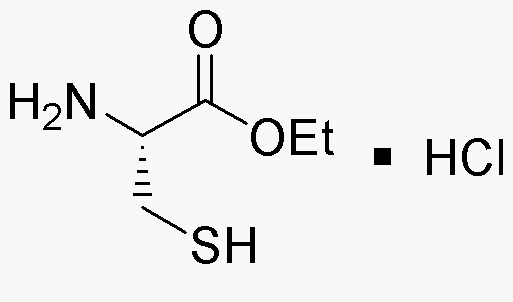L-Cysteine ethyl ester hydrochloride is widely utilized in research focused on:
- Pharmaceutical Development: This compound serves as a precursor in synthesizing various pharmaceuticals, particularly in developing drugs that target oxidative stress and inflammation.
- Antioxidant Formulations: It is incorporated into dietary supplements and functional foods due to its ability to enhance glutathione levels, which is crucial for cellular protection against oxidative damage.
- Cosmetic Products: L-Cysteine ethyl ester is used in skincare formulations for its skin-rejuvenating properties, helping to improve skin elasticity and reduce signs of aging.
- Biotechnology Research: Researchers utilize this compound in cell culture systems to study its effects on cellular metabolism and protein synthesis, aiding in the understanding of various biological processes.
- Food Industry: It is employed as a flavor enhancer and preservative, helping to improve the taste and shelf-life of processed foods while also providing nutritional benefits.
General Information
Properties
Safety and Regulations
Applications
L-Cysteine ethyl ester hydrochloride is widely utilized in research focused on:
- Pharmaceutical Development: This compound serves as a precursor in synthesizing various pharmaceuticals, particularly in developing drugs that target oxidative stress and inflammation.
- Antioxidant Formulations: It is incorporated into dietary supplements and functional foods due to its ability to enhance glutathione levels, which is crucial for cellular protection against oxidative damage.
- Cosmetic Products: L-Cysteine ethyl ester is used in skincare formulations for its skin-rejuvenating properties, helping to improve skin elasticity and reduce signs of aging.
- Biotechnology Research: Researchers utilize this compound in cell culture systems to study its effects on cellular metabolism and protein synthesis, aiding in the understanding of various biological processes.
- Food Industry: It is employed as a flavor enhancer and preservative, helping to improve the taste and shelf-life of processed foods while also providing nutritional benefits.
Documents
Safety Data Sheets (SDS)
The SDS provides comprehensive safety information on handling, storage, and disposal of the product.
Product Specification (PS)
The PS provides a comprehensive breakdown of the product’s properties, including chemical composition, physical state, purity, and storage requirements. It also details acceptable quality ranges and the product's intended applications.
Certificates of Analysis (COA)
Search for Certificates of Analysis (COA) by entering the products Lot Number. Lot and Batch Numbers can be found on a product’s label following the words ‘Lot’ or ‘Batch’.
*Catalog Number
*Lot Number
Certificates Of Origin (COO)
This COO confirms the country where the product was manufactured, and also details the materials and components used in it and whether it is derived from natural, synthetic, or other specific sources. This certificate may be required for customs, trade, and regulatory compliance.
*Catalog Number
*Lot Number
Safety Data Sheets (SDS)
The SDS provides comprehensive safety information on handling, storage, and disposal of the product.
DownloadProduct Specification (PS)
The PS provides a comprehensive breakdown of the product’s properties, including chemical composition, physical state, purity, and storage requirements. It also details acceptable quality ranges and the product's intended applications.
DownloadCertificates of Analysis (COA)
Search for Certificates of Analysis (COA) by entering the products Lot Number. Lot and Batch Numbers can be found on a product’s label following the words ‘Lot’ or ‘Batch’.
*Catalog Number
*Lot Number
Certificates Of Origin (COO)
This COO confirms the country where the product was manufactured, and also details the materials and components used in it and whether it is derived from natural, synthetic, or other specific sources. This certificate may be required for customs, trade, and regulatory compliance.


